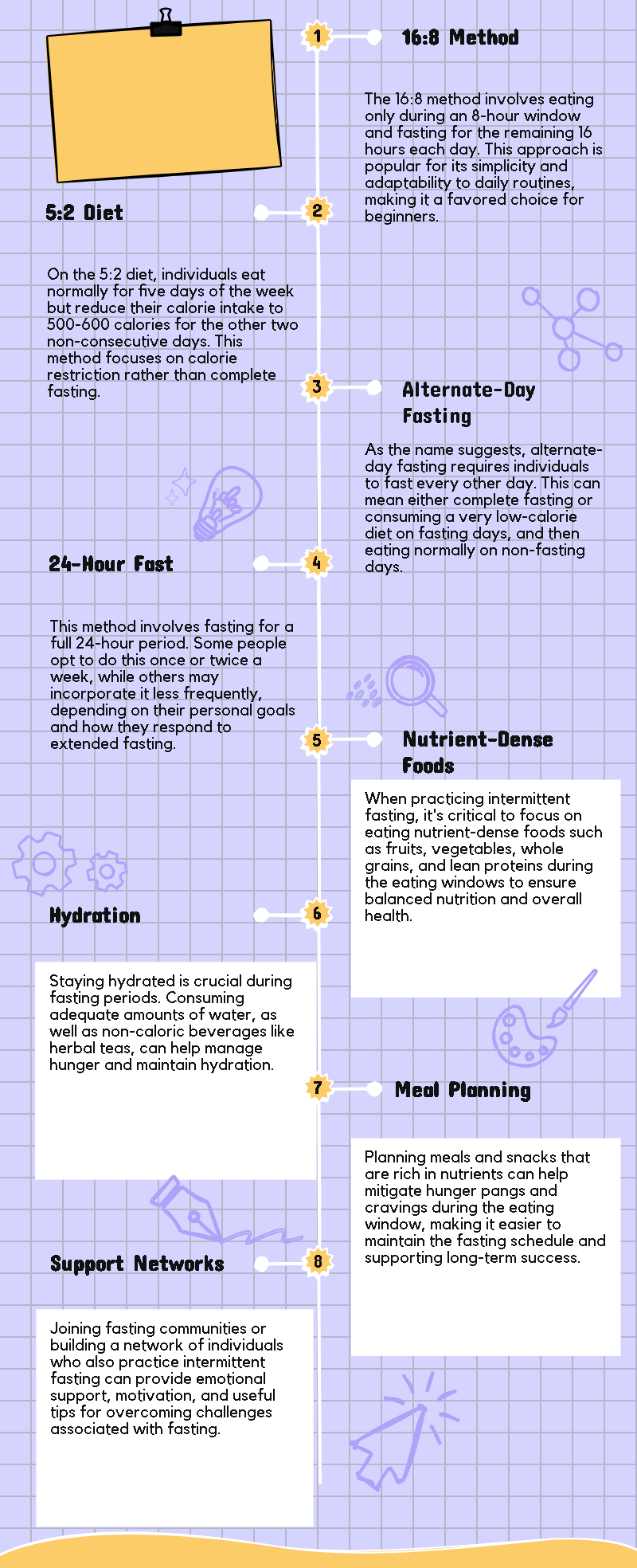Fasting emerges as a promising approach to cancer prevention, offering a natural and powerful strategy to combat the disease. This comprehensive guide delves into caloric restriction and intermittent fasting, highlighting their potential to inhibit cancer cell growth, reduce inflammation, and improve insulin sensitivity. It explores various fasting methods, such as the 16:8 and 5:2 diets, providing insights into finding a sustainable practice. The article emphasizes the importance of nutritional balance during eating windows to ensure the body receives essential nutrients. Addressing potential challenges, it offers practical tips for overcoming hunger pangs and social pressures. Looking ahead, it discusses ongoing research aimed at optimizing fasting protocols and enhancing cancer prevention strategies. By embracing fasting, individuals can take a proactive step towards reducing cancer risk and promoting overall health.
Are you looking for a powerful and natural way to reduce your risk of cancer? Look no further than fasting. Fasting, which involves caloric restriction and intermittent fasting, has emerged as a promising approach to cancer prevention. In this article, we’ll explore the ins and outs of fasting and its impact on cancer cells. We’ll also delve into different intermittent fasting methods, discuss the importance of balancing diet with fasting, and showcase real-life success stories. Additionally, we’ll address potential challenges and provide practical tips to overcome them. Finally, we’ll peek into the future and explore the exciting possibilities of fasting in cancer prevention.
Caloric Restriction 101: What It Is and How It Works
Caloric restriction is a dietary practice that involves reducing your overall calorie intake without sacrificing essential nutrients. It is not about starvation, but rather about optimizing nutrition while eating fewer calories. By creating a slight energy deficit, caloric restriction triggers a variety of biochemical changes in the body that can help protect against cancer.
Research has shown that caloric restriction can restrict the growth of cancer cells by inhibiting their ability to divide. Additionally, it helps to reduce the production of harmful free radicals, which can damage DNA and lead to cancer development. Moreover, caloric restriction promotes various beneficial processes in the body, such as autophagy, a cellular recycling process that helps eliminate damaged cells and mitigate cancer risk.
One of the key mechanisms through which caloric restriction exerts its anti-cancer effects is by influencing the insulin-like growth factor 1 (IGF-1) pathway. When we consume fewer calories, the body’s production of IGF-1 decreases. This reduction in IGF-1 levels has been linked to a lower risk of cancer development and progression. Furthermore, caloric restriction has been shown to enhance the body’s sensitivity to insulin, a hormone that regulates blood sugar levels. Improved insulin sensitivity can help prevent the development of insulin resistance, a condition often associated with an increased risk of cancer.
In addition to its direct impact on cancer cells, caloric restriction has been found to modulate various signaling pathways involved in inflammation. Chronic inflammation is a known risk factor for cancer, and by reducing inflammation, caloric restriction can help lower the overall risk of developing the disease. Studies have shown that caloric restriction can decrease the levels of pro-inflammatory molecules in the body, such as tumor necrosis factor-alpha (TNF-α) and interleukin-6 (IL-6). By dampening the inflammatory response, caloric restriction creates an environment less favorable for cancer initiation and progression.
Furthermore, caloric restriction has been shown to have positive effects on metabolism and energy expenditure. When we consume fewer calories, our body adapts by increasing the efficiency of energy utilization. This adaptation includes enhanced mitochondrial function, the powerhouse of our cells responsible for generating energy. By improving mitochondrial function, caloric restriction can boost overall energy production and promote healthy cellular metabolism. These metabolic changes not only contribute to weight loss but also play a role in reducing cancer risk.

Another interesting aspect of caloric restriction is its impact on cellular senescence, a state in which cells lose their ability to divide and function properly. Cellular senescence is associated with aging and age-related diseases, including cancer. Studies have shown that caloric restriction can delay the onset of cellular senescence and extend cellular lifespan. By preserving the functionality of cells and preventing premature senescence, caloric restriction may help reduce the risk of cancer and promote healthy aging.
It is important to note that caloric restriction should be approached with caution and under the guidance of a healthcare professional. While it has shown promising effects in cancer prevention, it may not be suitable for everyone, especially individuals with certain medical conditions or those who are already underweight. Additionally, it is essential to ensure that the reduced calorie intake still provides adequate nutrition to support overall health and well-being.
The Science of Fasting: Understanding Its Impact on Cancer Cells
Intermittent fasting, another form of fasting, involves alternating periods of eating and fasting. This practice has gained significant attention due to its potential health benefits, including cancer prevention. When you fast, your body becomes more efficient at using available energy and triggers several physiological responses that can inhibit the growth and spread of cancer cells.
Intermittent fasting induces a state of ketosis, where your body switches from using glucose as its primary source of energy to utilizing ketones. Cancer cells, on the other hand, have difficulty using ketones as fuel. This metabolic shift can place cancer cells under increased stress and make them more susceptible to immune system attacks and other anticancer treatments.
Intermittent Fasting Methods: Exploring Various Approaches
There are different ways to practice intermittent fasting, and finding the method that suits you best is essential for long-term success. One popular approach is the 16:8 method, where you fast for 16 hours and limit your eating window to 8 hours each day. Another method is the 5:2 diet, which involves eating normally for five days and restricting calorie intake to 500-600 calories on two non-consecutive days. You may also consider alternate-day fasting, where you fast every other day or the 24-hour fast, where you abstain from eating for a full day.

Experimenting with different methods and listening to your body’s signals can help you find the intermittent fasting approach that works best for you. Remember, the key is finding a sustainable routine that you can adhere to in the long run.
Nutritional Considerations: Balancing Diet with Fasting
While fasting is a powerful tool for cancer prevention, it’s crucial to pay attention to nutritional considerations to ensure that your body is getting the essential nutrients it needs. During fasting periods, it’s essential to stay hydrated and consume adequate amounts of water, herbal teas, and other non-caloric beverages. Additionally, including nutrient-dense foods in your diet, such as fruits, vegetables, whole grains, and lean proteins, during your eating window can provide the necessary vitamins, minerals, and antioxidants to support your overall health and well-being.
Consulting with a registered dietitian or nutritionist can also be beneficial in developing a well-rounded eating plan that aligns with your fasting goals and provides optimal nourishment for your body.
Potential Challenges and How to Overcome Them
While fasting offers numerous benefits, it’s essential to acknowledge and address potential challenges that may arise. Hunger pangs, food cravings, and social pressures can sometimes make fasting seem daunting. However, with the right mindset and strategies, you can navigate these obstacles successfully.
One effective approach is to plan your meals and snacks mindfully during your eating window. Filling your plate with nutrient-rich foods can help keep you satiated and reduce cravings. Additionally, building a support network of like-minded individuals or joining online fasting communities can provide a sense of connection, encouragement, and accountability. Remember, every hurdle you overcome brings you closer to better health and a reduced risk of cancer.
Looking Ahead: Future Research and Developments in Fasting and Cancer Prevention
The future of fasting as a preventive measure against cancer is incredibly promising. Researchers are continuously investigating the mechanisms underlying fasting’s anticancer effects and exploring ways to optimize its implementation. The ongoing studies aim to refine fasting protocols, uncover potential synergies with existing cancer therapies, and delve deeper into the molecular pathways influenced by fasting. Exciting breakthroughs await us, promising new avenues in the fight against cancer.
Fasting for health, specifically through caloric restriction and intermittent fasting, has emerged as a powerful strategy for cancer prevention. By understanding the science behind fasting, exploring various methods, balancing nutrition appropriately, drawing inspiration from real-life success stories, overcoming challenges, and looking forward to future developments, you can take control of your health and reduce your risk of cancer. Embrace fasting as a lifestyle choice, and embark on a journey towards a healthier, cancer-free future.






